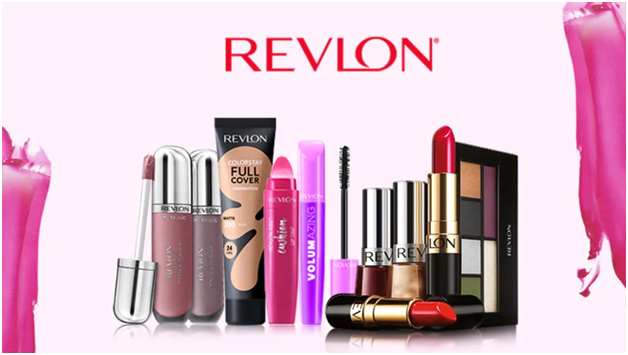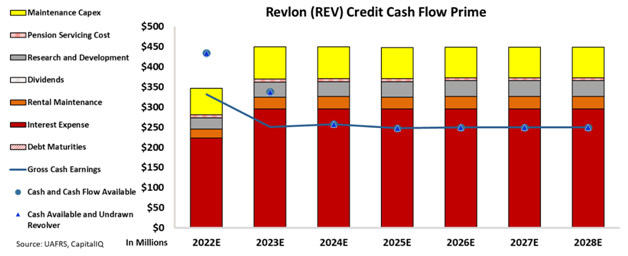A Downfall in the Making: This case study shows a brand can be big AND still not be worth the investment! [Wednesdays: The Independent Investor]

Miles Everson’s Business Builder Daily speaks to the heart of what great marketers, business leaders, and other professionals need to succeed in advertising, communications, managing their investments, career strategy, and more.
A Note from Miles Everson:
Happy Wednesday!
We hope you’re having a great day so far.
Let’s talk about another investing tip. Every Wednesday, we publish articles about various investment strategies and insights to help you achieve true financial freedom.
In this article, we’ll focus on an important lesson that enables businesses to thrive amid different situations in the markets.
Keep reading below to know more about today’s topic.
Miles Everson
CEO, MBO Partners
Chairman of the Advisory Board, The I Institute
The Independent Investor
“The corporate tides have changed overnight…”
Professor Joel Litman, Chairman and CEO of Valens Research and Chief Investment Strategist of Altimetry Financial Research, says the business sector made it through the worst of the pandemic without a ton of bankruptcies.
While lots of small businesses were affected—some completely closed down early on—public companies weren’t too badly hurt.
For a while, companies reported record profits as lockdowns ended and there was much-needed goodwill in recent months. However, with interest rates climbing and gross domestic product (GDP) tightening, it looks like the brief reprieve for businesses is over.
… and one of the companies to succumb to this pain is this cosmetics company:
Revlon.

Photo from The Channel 46
Revlon is a multinational company specializing in cosmetics, skin care, fragrance, and personal care products. Headquartered in New York City, the brand sells its products in 150 countries in Asia, North America, and Australia.
For generations, Revlon has made a mark on beauty enthusiasts from all over the world. It has been a dominant makeup brand for the past 90 years.
Unfortunately, the brand failed to keep up with the times…
On June 16, 2022, Revlon filed for Chapter 11 bankruptcy as it was unable to adjust to a younger market.
[Chapter 11 Bankruptcy: A form of bankruptcy that involves a reorganization of a debtor’s business affairs, debts, and assets. This is also known as “reorganization bankruptcy” and is often used by large entities and businesses.]
The collapse of Revlon’s finances followed a downturn for the beauty sector during the height of the COVID-19 pandemic. The company also faced longer-term pressure from social media rivals such as Rihanna’s Fenty Beauty and Kylie Jenner’s Kylie Cosmetics.
Simply said, Revlon failed to adapt to changing consumer habits and marketing strategies.
In a world where other businesses are leveraging social media to connect with customers and reach a younger consumer base, the once-giant beauty brand stuck to its traditional marketing strategies, primarily selling its products through middlemen suppliers like drugstores and cosmetic counters.
According to Lia Neophytou, Senior Consumer Analyst at GlobalData:
“Revlon has gradually lost its U.S. market share since 2018, but the pandemic dealt a further blow to the firm on top of existing financial challenges. Furthermore, its mass market and affordably priced Revlon beauty brand has faced competition from more trend-led brands leveraging TikTok—a key source of inspiration for beauty and grooming purchases—to entice a younger consumer base.”
A Downfall in the Making
Revlon’s downfall wasn’t a sudden event. It was compounded by supply chain delays and decades of debt…
Majority shareholder and businessman Ron Perelman saddled the company with large acquisitions over the years, with cosmetics brand Elizabeth Arden, which was bought at USD 870 million in 2016, as the most recent one.
Currently, Revlon estimates its debt lies between USD 1 billion and USD 10 billion.
Oh no… it looks like the past few decades of bad business moves have finally caught up to the brand.
Using Altimetry Financial Research’s Credit Cash Flow Prime (CCFP) analysis, Professor Litman and his team analyzed Revlon’s cash flows and debt obligations. From there, they were able to determine how strong the brand’s balance sheets truly were.
In the chart below, the stacked bars represent Revlon’s obligations each year through 2028. These obligations are then compared to the company’s cash flow (blue line) and cash on hand at the beginning of each period (blue dots).

Clearly, the CCFP analysis shows Revlon won’t be able to meet its operating obligations starting 2023 and will struggle to pay off the interest on its considerable debt.
The chart also shows the company doesn’t have the capital it needs to manage its interest obligations, let alone invest in necessary changes to the business.
That’s why it’s no surprise that the brand’s huge debt load spelled disaster as more competitors entered the cosmetics space… and with interest rates going up, Revlon would be unable to refinance.
The silver lining in this case study?
Revlon’s collapse isn’t a signal of what’s to come for other firms for the rest of 2022!
Rather, the company’s bankruptcy shows businesses need to adapt to the ever-changing markets or else, they’ll struggle. It’s not a sign of a market contagion.
We hope you learned a lot from today’s article!
Advice for entrepreneurs and company leaders: Never use your brand’s growth, size, or market dominance as an excuse to stay complacent or stick to traditional business models.
Watch out for new trends and marketing strategies. The business landscape is constantly changing, so you must also constantly think of ways to stay on top of your game.
Advice for investors: Always study the financial statements and overall performance of the companies you’re planning to invest in. Revlon’s case study must have taught you that just because a company is big or has existed long enough, that doesn’t mean it’s worth the investment.
Sometimes, it’s the big ones that set up a trap.
Stay tuned for next week’s article!
(This article is from The Business Builder Daily, a newsletter by The I Institute in collaboration with MBO Partners.)
About The Dynamic Marketing Communiqué’s
“Wednesdays: The Independent Investor”
To best understand a firm, it makes sense to know its underlying earning power.
In two of the greatest books ever written on investing, the “Intelligent Investor” by Benjamin Graham and “Security Analysis” by David Dodd and Benjamin Graham (yes, Graham authored both of these books), the term “earning power” is mentioned hundreds of times.
LITERALLY.
Despite that, it’s surprising how earning power is mentioned seldomly in literature on business strategy. If the goal of a business is wealth creation, then the performance metrics must include the earning power concept.
Every Wednesday, we’ll publish investing tips and insights in accordance with the practices of some of the world’s greatest investors.
We make certain that these articles help you identify and separate the best companies from the worst, and develop your investing prowess in the long run.
Our goal?
To help you get on that path towards the greatest value creation in investing.
Hope you’ve found this week’s insights interesting and helpful.
Stay tuned for next Wednesday’s “The Independent Investor!”
Cheers,
Kyle Yu
Head of Marketing
Valens Dynamic Marketing Capabilities
Powered by Valens Research
www.valens-research.com




